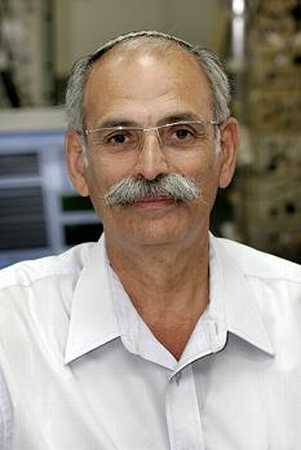The system that was developed at Bar Ilan University and which leads to the tissue being examined light signals of different shades with the help of optical fibers and analyzes the condition of the cells and the tissue using the light emitted from them ■ The clinical research is underway

Doctors who monitor the condition of a patient hospitalized in the intensive care unit or operated on for several hours, check the composition of his blood through a blood test and use means of monitoring the respiratory system, blood pressure or heart rate.
A group of researchers from the Faculty of Life Sciences and the Gonda Center for Brain Research at Bar-Ilan University, led by Professor Avraham Mivsky, developed an innovative system that allows doctors to monitor in real time, using light, vital signs of various tissues in a patient's body. company critisense acquired the rights to the system from Bar-Ilan University and developed a device that was recently approved by the FDA for the use of the new system in patients.
The new system, whose developer group is headed by Prof. Mivski, actually uses the mitochondria - which is the center of energy production in every living cell - of the cells of the tissue being tested to get an indication of the tissue's state of vitality.
Prof. Mivski explains that the mitochondria in the cells produce during their normal operation a substance called NADH, which is a measure of the function of the mitochondria and is therefore an extremely important measure for assessing the function of the tissue. The measurement method is based on the unique "fingerprint" of the NADH molecules, which can be detected by non-intrusive optical means when the tissue is illuminated. The device that implements the method uses ultraviolet light that is guided through an optical fiber to the tissue being tested. During the illumination, the device, using an additional optical fiber, measures the intensity of the light produced by the NADH in the tissue and thus provides information in real time and continuously for hours and days about the vitality of the tissue at the point to which the optical fiber is connected.
Besides the activity of the mitochondria, the device also checks the degree of saturation of the blood with oxygen, the blood flow in the small blood vessels and the blood volume. These data complement the information obtained from the measurement of mitochondrial activity and add insight to the doctors about the state of vitality of the organ being tested.
First practical use - actually a catheter!
The new device is of great importance in monitoring the condition of patients in critical condition, undergoing complex surgeries or hospitalized in intensive care units who have a catheter inserted into their body to collect urine. The innovative catheter developed and called a "smart catheter" also contains optical fibers that illuminate and measure the vitality of the urinary tract tissue with the help of the new device.
According to Prof. Mivski, the developed device is first applied to patients who have a catheter inserted into their body to collect urine. Since the tissue of the urinary tract is one of the first tissues that can indicate a deterioration in the patient's condition, for example in cases of internal bleeding in the body, it is important to measure in this place.
In addition, the system also allows the condition of a transplanted organ to be monitored during transplant surgeries or to monitor the vitality of brain tissue during surgery or in the neurosurgical intensive care unit.
To date, the device has been tested on about 40 patients at the Sheba Hospital in Tel Hashomer and according to Prof. Mivski, there is now a need for clinical research on a large number of patients in Israel and abroad and the Critisense company recently began locating investors and raising funding for this.

One response
Congratulations to Prof. Mayevsky!
Recently in science they publish articles about many people I know, what fun!
Prof. Mayevsky gave the blood and breathing course and I remember that in one of the laboratories he took us to his laboratory and I saw the device in question working on an exposed brain of a rat. Later in the master I tried to create a collaboration and see if the device is also relevant for sea lilies, but it was an unsuccessful idea in retrospect.
I suppose that now that the patent is approved for clinical research, there is no longer any need to worry about finances for the laboratory. This is good and happy news.
Greetings friends,
Ami Bachar